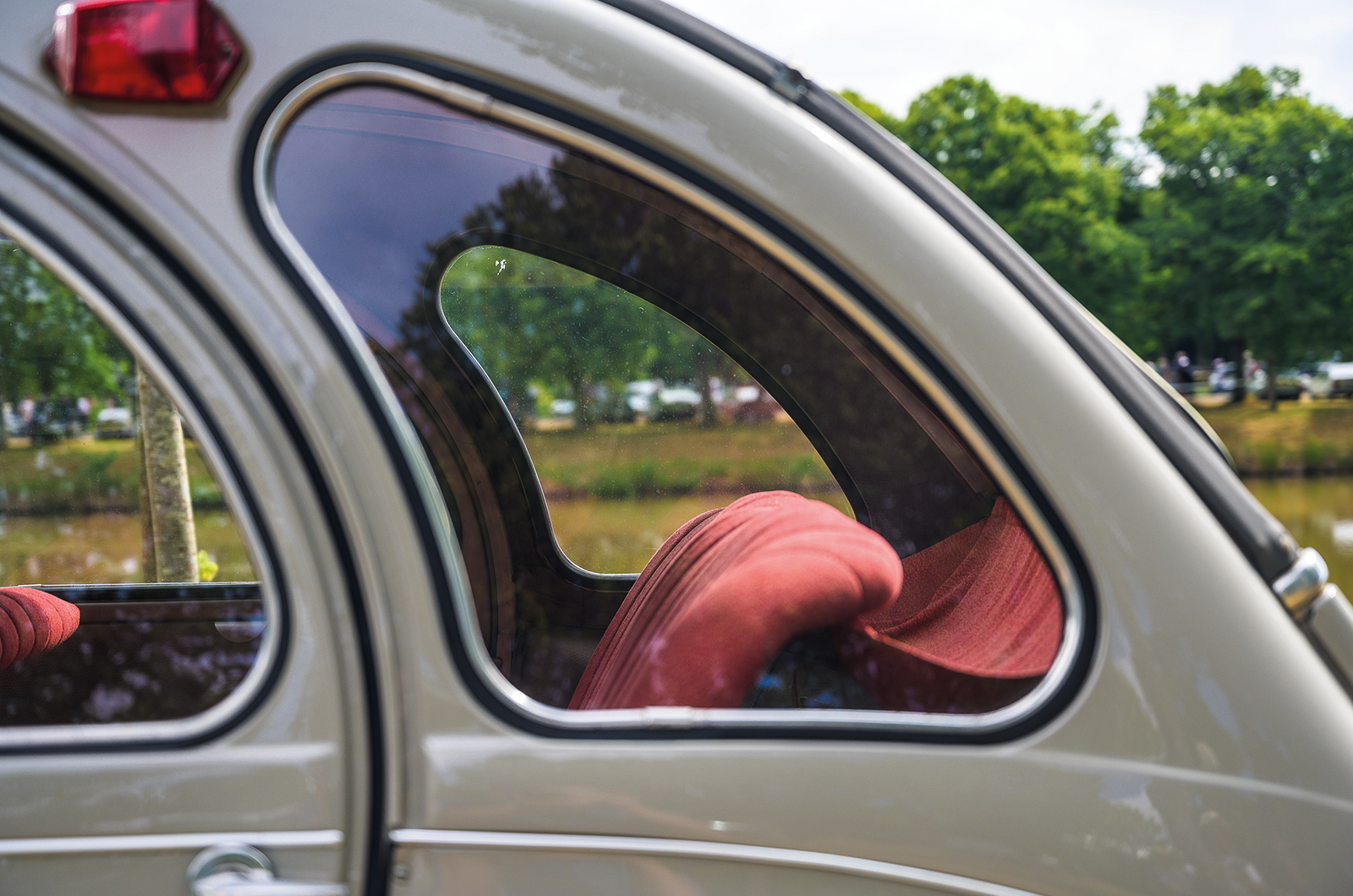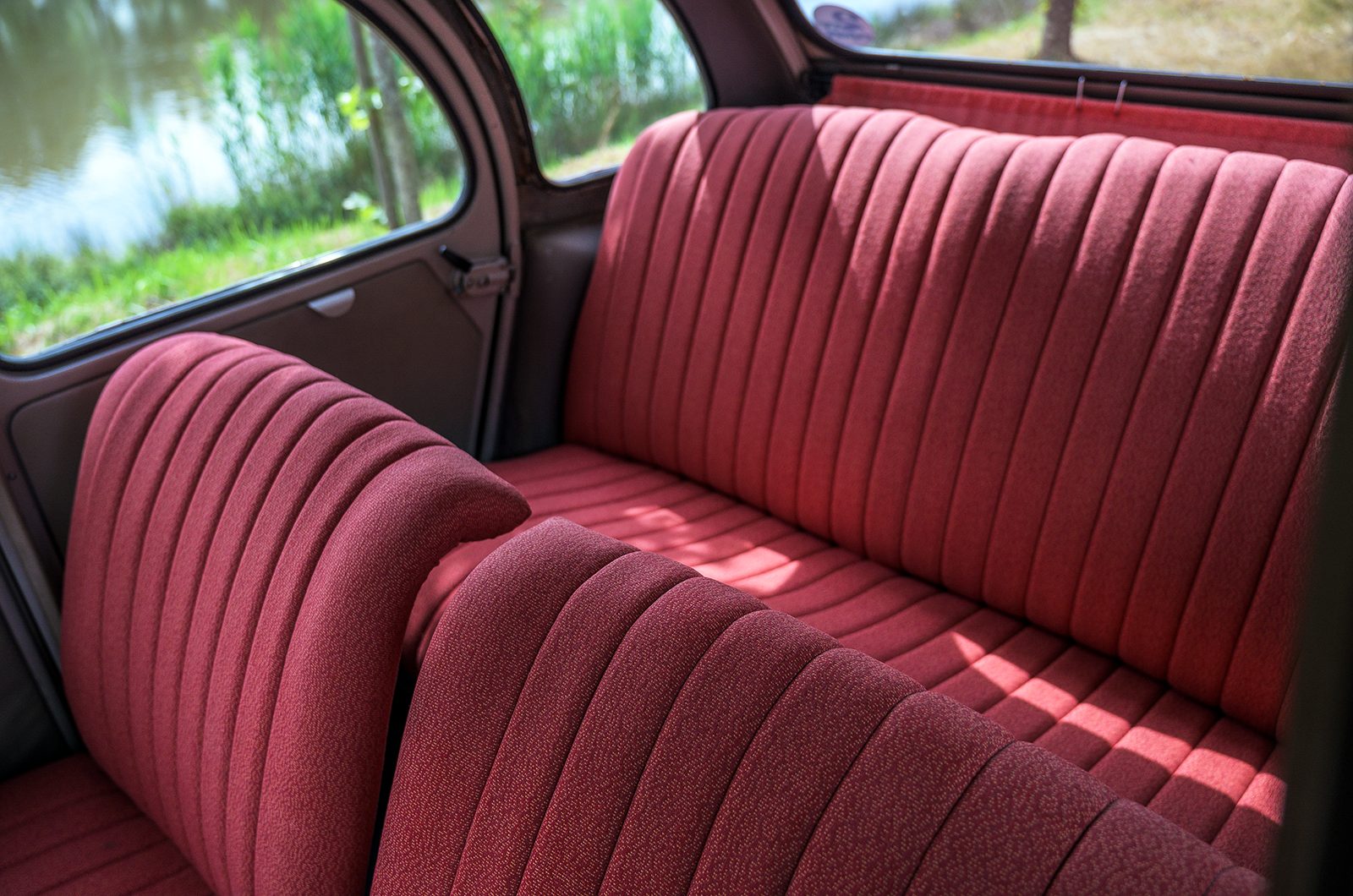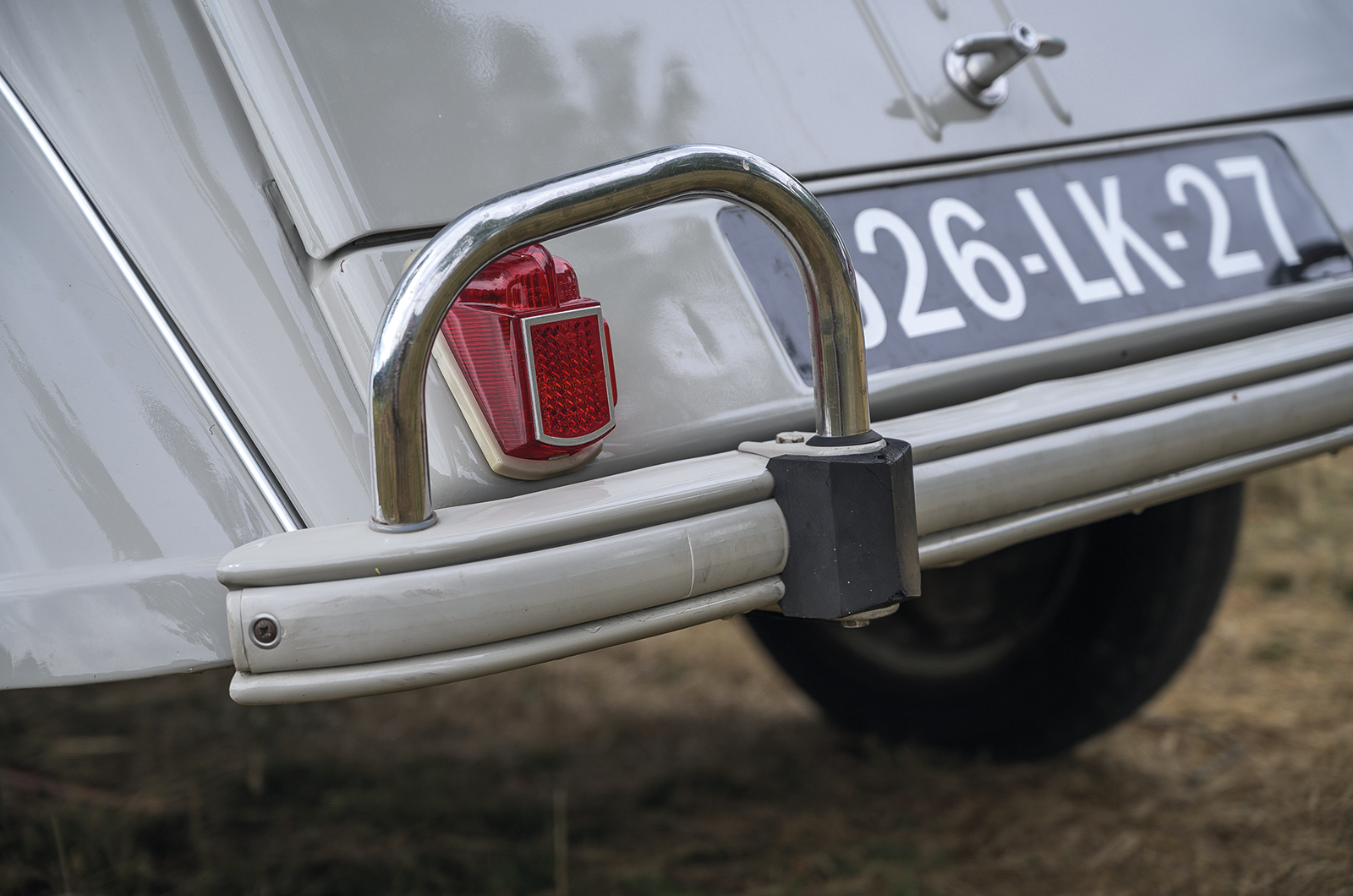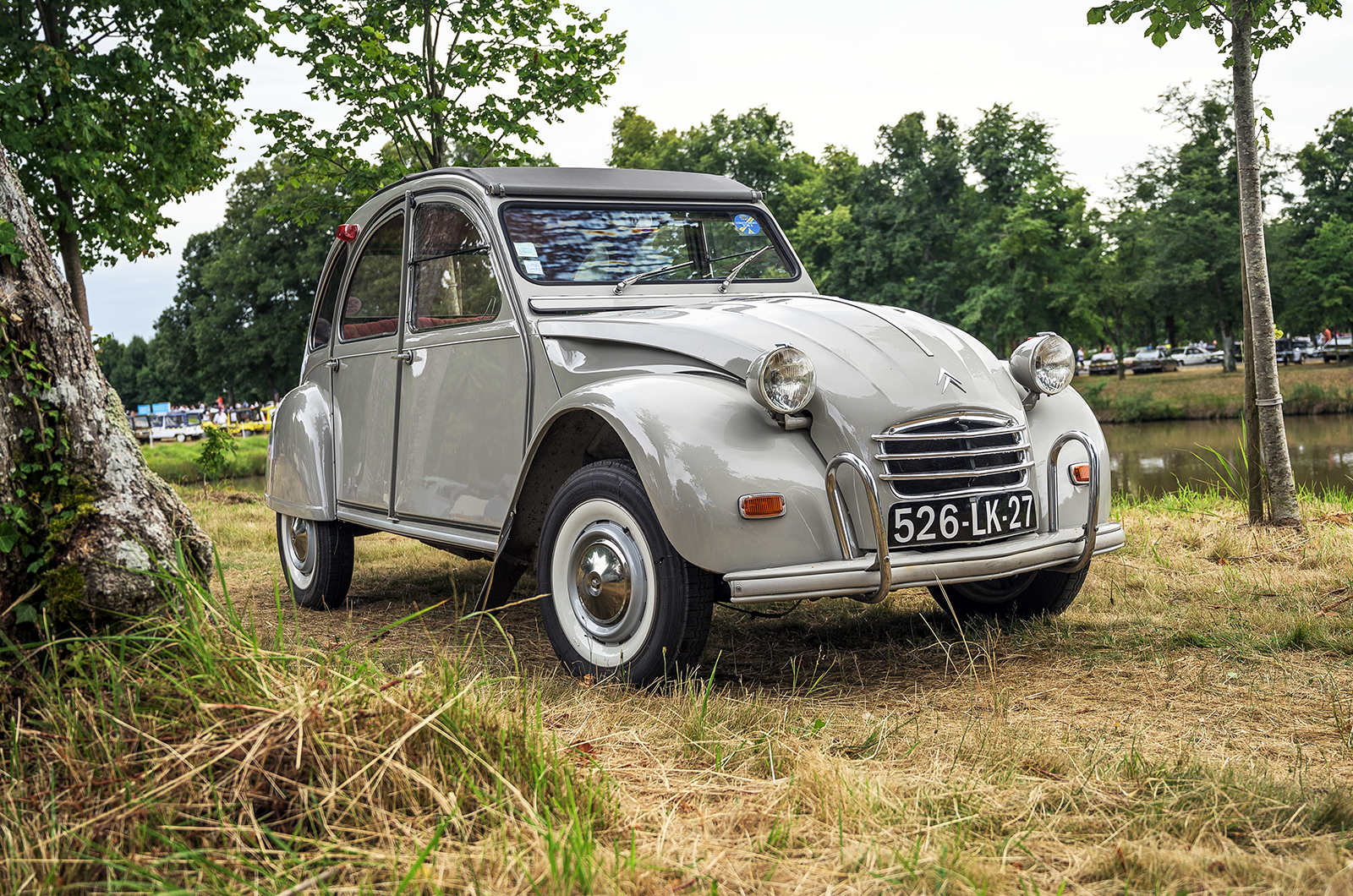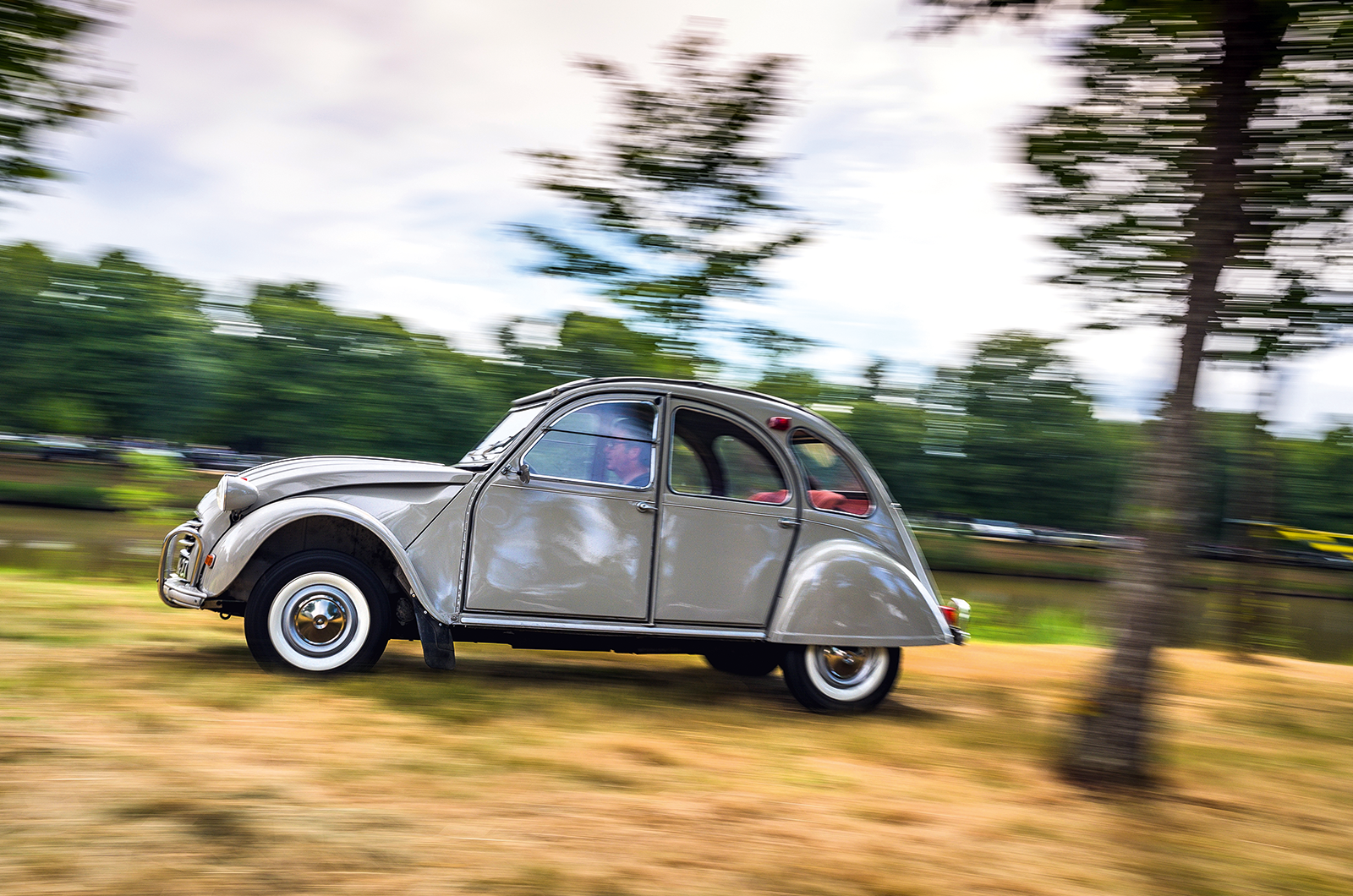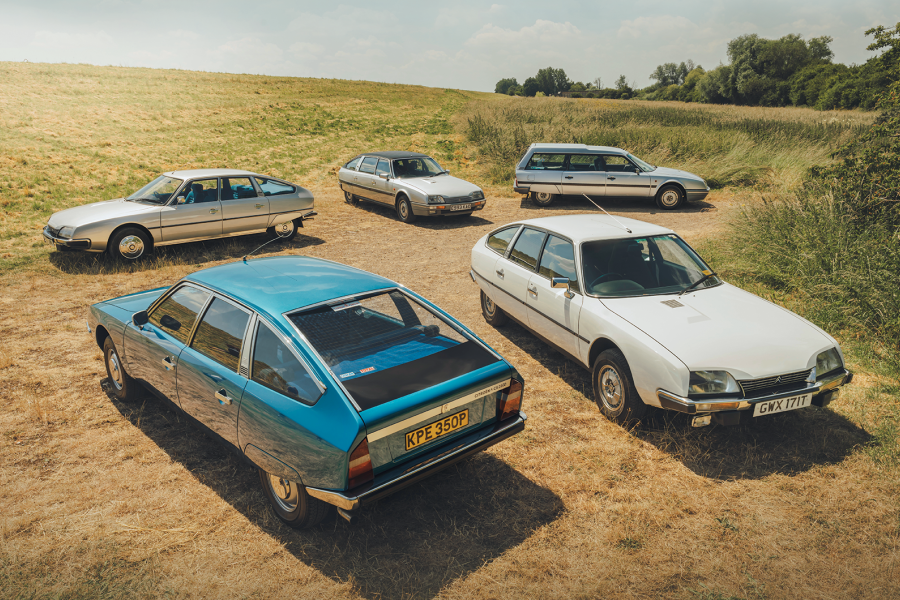
The idea of a luxury 2CV seems incongruous, but it’s what we have here.
Not only that, but we’re talking of a model that was only made for a matter of months – making it a sought-after rarity.
Why, though, did Citroën decide to doll-up the ‘Deuche’ with a sparkle of glamour so at odds with the car’s utilitarian image?
The answer isn’t hard to find.

The interior does feel more special than that of a standard Citroën 2CV
In October 1961, Renault had introduced its R4. In its first full year, sales came within a whisker of those of the 2CV – and in 1963 they would pull ahead.
The notion that Renault sold its small cars – 4CV and Dauphine – to townies and left the rural market to the 2CV was brusquely knocked on its head.
Not only that, but the new Renault had a dual town-and-country appeal thanks not just to its better performance, but also to its availability in more luxurious forms.
Citroën had to react, and in March 1963 it came out with the AZAM – an AZ (a 425cc 2CV, in other words) that had been améliorée or ‘improved’.

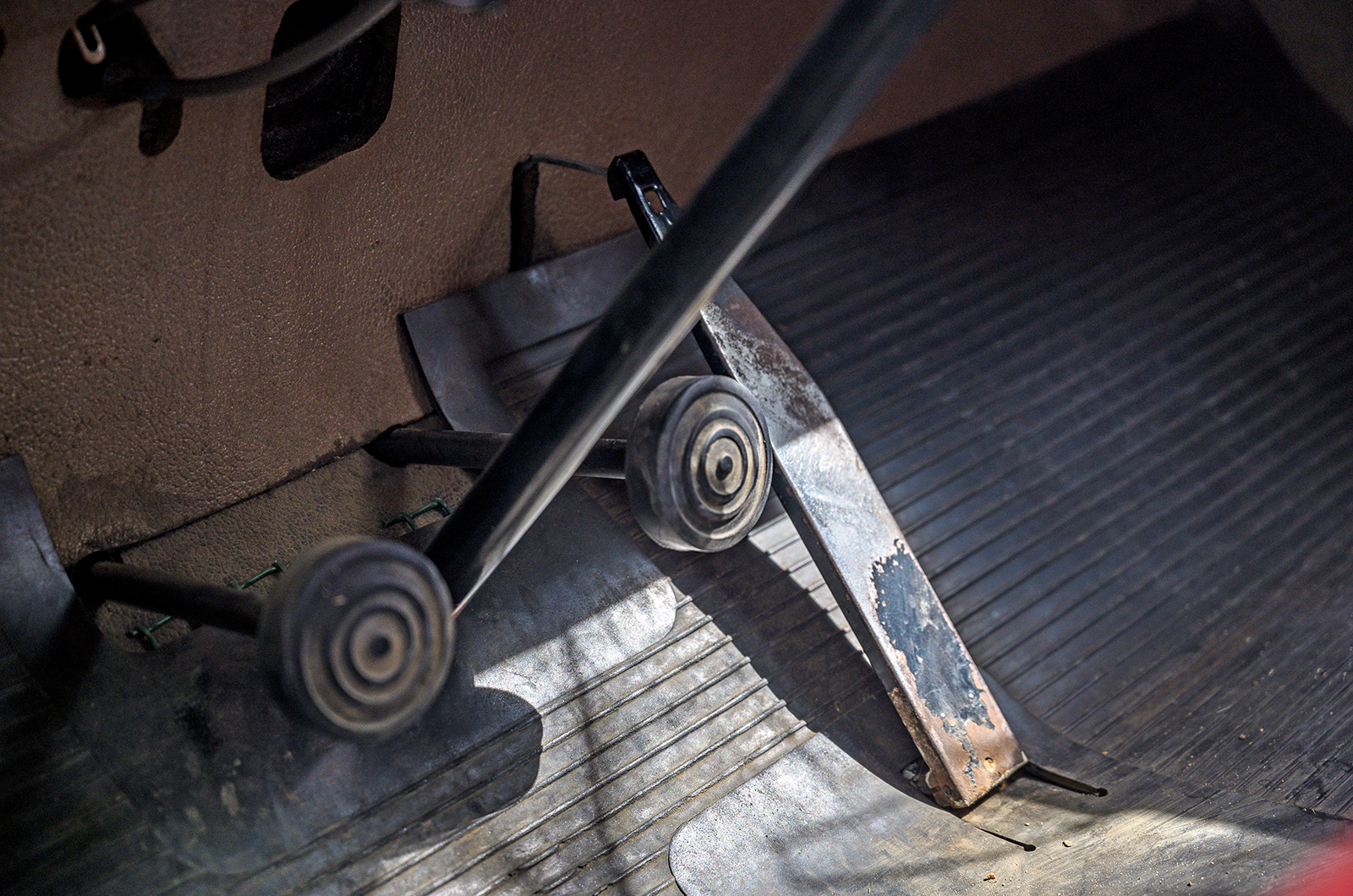
The AZAM Export’s all-black dash includes Ami 6 instruments


